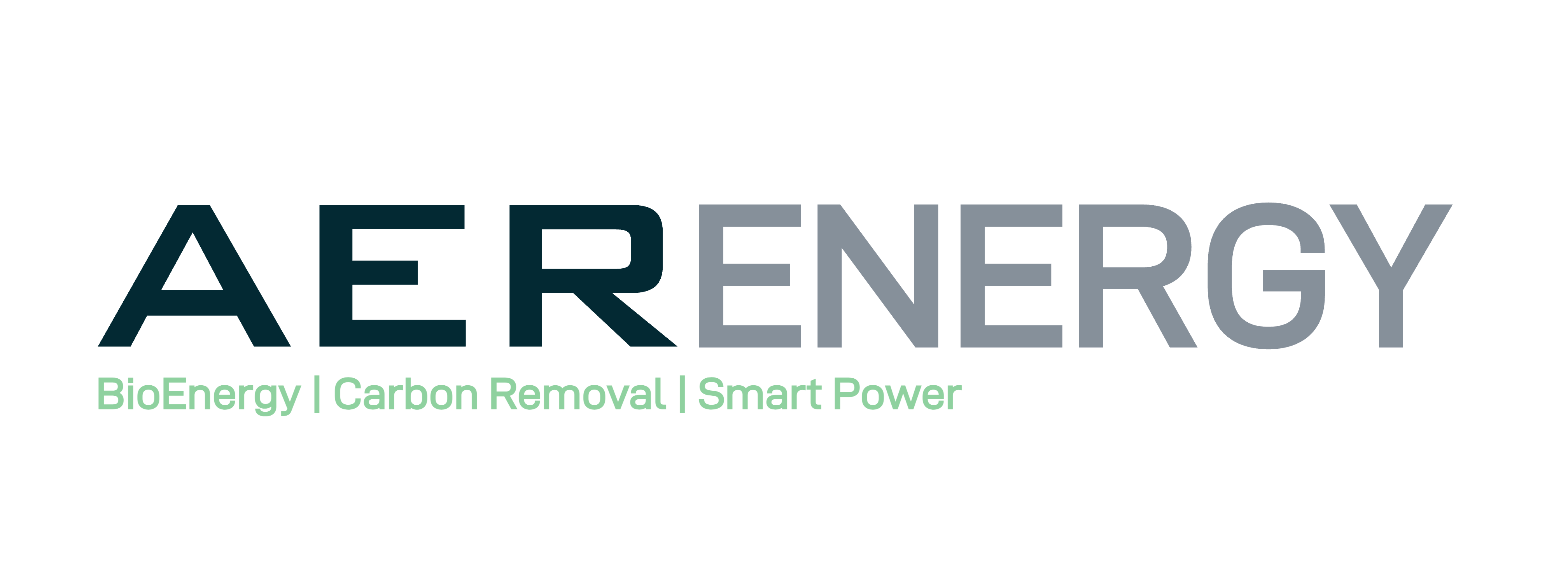What Is Carbon-Negative Power—And Why Does It Matter Now?
Executive Summary:
Carbon-negative power goes beyond net-zero by actively removing CO₂ from the atmosphere during electricity generation. At AER Energy, we operate commercial-scale systems that use modular gasification to convert biomass into clean syngas, while sequestering carbon permanently as biochar or captured CO₂. This results in 24/7 renewable energy and premium carbon credits—backed by third-party MRV and global standards.
Understanding Carbon-Negative Power
Carbon-negative power refers to energy systems that remove more carbon dioxide than they emit across their entire lifecycle. Unlike carbon-neutral or low-emission energy sources, these systems contribute to net-negative atmospheric CO₂ levels.
Most commonly delivered through Bioenergy with Carbon Capture and Storage (BECCS), AER Energy’s approach enhances this model with high-efficiency gasification, modular design, and integrated sequestration.
Key definitions:
- ✅ Carbon-negative ≠ carbon neutral
- ✅ Carbon-negative = climate-positive impact
How AER Energy Achieves Carbon-Negative Electricity
AER’s power plants are engineered for carbon-first outcomes, not just clean energy output.
🔹 Step-by-Step Process:
- Sustainable Biomass Feedstock
Forestry residues, agricultural waste, and municipal organics—all of which captured CO₂ during growth. - High-Efficiency Syngas Generation
Gasification at ~800°C with zero fossil fuels or external energy—even at startup. - Built-In Carbon Sequestration
Solid carbon is sequestered as stable biochar or via CO₂ capture streams—verified and permanent. - Dual Revenue Streams
Systems generate both dispatchable renewable electricity and carbon credits verified under:- ISO 14064
- Verra
- Puro.earth
Performance Metrics & Deployment
Why Carbon-Negative Power Matters Now
The urgency of carbon removal is no longer theoretical—it is foundational.
🌍 Global Targets Require Removals
The IPCC projects that 5–10 billion tonnes of CO₂ must be removed annually by 2050 to stay below 1.5°C warming.
💰 Rising Value of Carbon Removals
Premium, high-integrity removals can fetch US$100–$600/tCO₂e in both voluntary and compliance markets.
🏭 Solutions for Hard-to-Abate Sectors
Sectors like cement, steel, and shipping need negative emissions infrastructure today—not by 2040.
AER Energy’s Commercial Systems
AER’s plants are already operating in live commercial environments:
- 🔧 Modular and Scalable: Standardized units for fast deployment
- 🌱 Flexible Feedstock: From plantation waste to plastics
- 📊 Fully MRV-Enabled: Carbon outcomes are measurable and certifiable
- 🔋 Energy + Carbon: Dispatchable power + monetizable credits
What Makes AER Different
AER Energy is not an equipment vendor. We are a strategic infrastructure partner delivering:
- ✅ Integrated carbon-negative power solutions
- ✅ Verified carbon credit issuance
- ✅ Project development and lifecycle support
- ✅ Alignment with industrial, financial, and policy stakeholders
Our value is measured in megawatts and megatonnes—and backed by real-world results.
FAQs: Carbon-Negative Power
Q1: Is carbon-negative power the same as BECCS?
Not exactly. AER’s system is a next-generation form of BECCS using high-temperature gasification and modular design, with built-in carbon capture through solid sequestration and optional CO₂ capture.
Q2: How do carbon credits get verified?
Through third-party MRV (Monitoring, Reporting, Verification) frameworks under standards like Puro.earth, Verra, and ISO 14064.
Q3: What makes a project “carbon-negative”?
When the system sequesters more CO₂ (via biochar or captured gases) than it emits through its entire lifecycle—including feedstock, operations, and outputs.
Q4: Can AER Energy systems operate off-grid?
Yes. Our systems are microgrid-compatible and fully self-sustaining, ideal for remote or industrial sites.
Q5: How fast can a unit be deployed?
Standard modules can be delivered and commissioned in 4–6 months, depending on site conditions and permitting.
Want to Learn More?
- 📄 Download the Carbon-Negative Power Overview
- 🤝 Speak with a Project Specialist
- 💬 Join our Carbon Credit Expression of Interest List
About AER Energy:
AER Energy designs and operates commercial-scale carbon-negative energy systems. We produce ultra-clean syngas, renewable electricity, and green methanol—while permanently removing atmospheric carbon. Our infrastructure is active across Asia-Pacific and Europe, with certified carbon credits and a proven deployment track record.



.png)
.png)